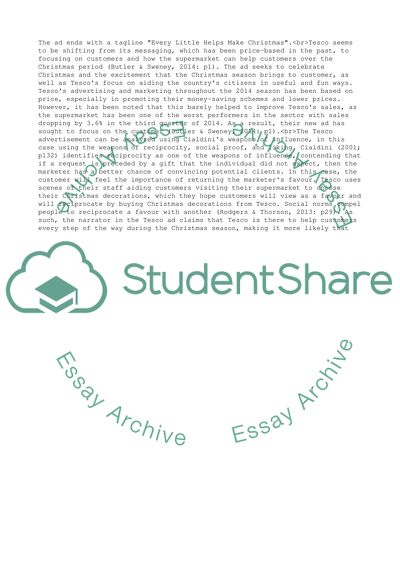Cite this document
(“Analysis of Tesco Christmas Advert 2014 - Lights on Essay”, n.d.)
Analysis of Tesco Christmas Advert 2014 - Lights on Essay. Retrieved from https://studentshare.org/business/1669749-analysis-of-tesco-christmas-advert-2014-lights-on
Analysis of Tesco Christmas Advert 2014 - Lights on Essay. Retrieved from https://studentshare.org/business/1669749-analysis-of-tesco-christmas-advert-2014-lights-on
(Analysis of Tesco Christmas Advert 2014 - Lights on Essay)
Analysis of Tesco Christmas Advert 2014 - Lights on Essay. https://studentshare.org/business/1669749-analysis-of-tesco-christmas-advert-2014-lights-on.
Analysis of Tesco Christmas Advert 2014 - Lights on Essay. https://studentshare.org/business/1669749-analysis-of-tesco-christmas-advert-2014-lights-on.
“Analysis of Tesco Christmas Advert 2014 - Lights on Essay”, n.d. https://studentshare.org/business/1669749-analysis-of-tesco-christmas-advert-2014-lights-on.


